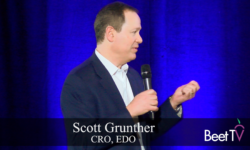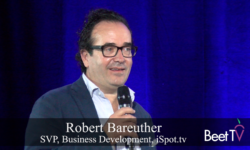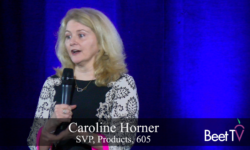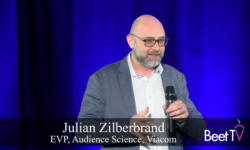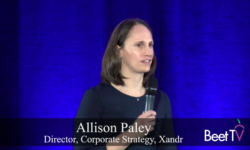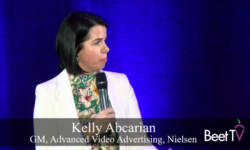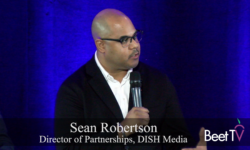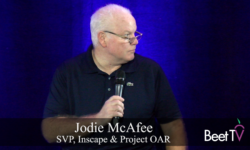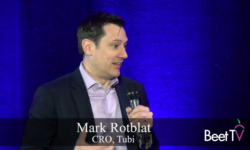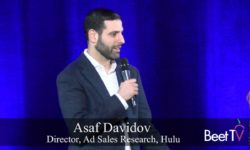SAN JUAN, PR– Joanna O’Connell and her team are conducting research looking at the future of advertising three to five years out. In a keynote at the Beet Retreat in San Juan in February, O’Connell, the vp and principal analyst at Forrester, assured that advertising is not going anywhere, but explained some warning signs about how it is shifting.
The future of advertising needs to be looked at through the lens of three main constituencies: publishers, marketers and consumers. O’Connell explained that advertising has existed relatively in balance of these three pieces throughout its history, but that is being phased out.
“The balance part of the equation is gone and that is bad,” O’Connell said. “The reality is that consumers now have the ability to get away from advertising in ways that are sort of unprecedented.”
Consumers are now skipping and blocking ads at an alarming rate. The byproduct of this imbalance is not good for publishers, because they’re not able to communicate a true value proposition and it’s not good for marketer, because they are not able to generate an effective business performance.
But it’s important to trace back to what got us to this imbalance. The first reason is that we have a traditional notion of segmentation. This is most obvious in the fallback of age and gender, but not solely limited to that.
“We also tend to think of things like behavioral signals as somehow representative of consumers and use that as a way to develop segmentation.” O’Connell said. “But consumers are so much more complicated and nuanced than that.”
Another is how media is bought. It’s still bought in silos through traditional planning and buying teams and several other teams.
“The reality is, the way the consumers consume media is so much different than it was before,” O’Connell said. “Not only is it fragmented and complicated, but they’re also doing things like using two devices at the same time, so they’re doing things like simultaneously consuming two different things across two different devices.”
Messaging has also fallen flat. The way that consumers can now access information has meant that information asymmetry, which traditionally benefits the seller, has been diminished.
Simultaneously, there are external forces shaping the future of advertising. Privacy, and the ability to access consumer data, is one of these things that will reshape how advertising works. The cookie is dying out but is still the infrastructure that everyone is using. The way that we think about ad formats, including the banner ad, where we’re hitting walls with growth and considering their futility.
“What these things mean to me is that we’re looking at a future that is far less open, that is far less broad-based, that is significantly less audience-targeting driven in the way that it has been.” O’Connell said. “Those days are starting to wane, and we’re going to have a future that is significantly more closed, more curated, more controlled, and much more driven by consumers telling us what they want and what they’re OK with.”
It would be easy for the TV industry to pat itself on the back and think that they’re immune, but that might not be true. The reality is that it could very much fall into so many of the same traps that digital did. TV advertising could be creepy, intrusive, it could follow people around, it could disrespect their tolerance for advertising.
“What I’m interested in is a future that’s a lot more thoughtful, a lot more collaborative, a lot more connected where we’re following a principal of the spirit of the intent of consumer choice and control and preference, not the letter.” O’Connell said.
This video was produced at the Beet Retreat San Juan 2020 sponsored by 605, DISH Media, NBCU, Roundel & Tubi. For more videos from the series, please visit this landing page.







